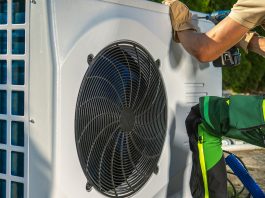Researchers have developed a nanosheet device with the highest energy storage performance ever seen – surpassing conventional research on dielectric capacitors.
A research group from the Institute for Materials and Systems for Sustainability (IMaSS), Nagoya University in Japan, have developed nanosheet technology to overcome the challenges of dielectric capacitors.
Dielectric capacitors have great potential to replace conventional energy storage applications – helping to create innovative technologies for the clean energy transition.
The study, ‘Ultrahigh Energy Storage in 2D High-κ Perovskites,’ is published in the journal Nano Letters.
Energy storage technology is vital for the transition to renewables
Energy storage technology requires innovation for the effective use of renewable energy and the production of electric vehicles.
However, current energy storage technology has barriers to long-term implementation that must be overcome.
Lithium-ion batteries, for example, have long charging times and suffer problems including electrolyte degradation, lifetime, and unwanted ignition.
Dielectric capacitors are a promising energy storage alternative
Dielectric capacitors are a promising alternative to conventional energy storage technology.
Dielectrics are materials that store energy through a physical charge displacement mechanism called polarisation. Capacitors are comprised of a sandwich-like film made of two metal electrodes separated by a solid dielectric film.
When an electric field is applied to the capacitor, the positive charges are attracted to the negative electrode and the negative charges move toward the positive electrode. Storing electrical energy depends on the polarisation of the dielectric film by applying an external electric field.
Professor Minoru Osada, leader of the research group, said: “The dielectric capacitors have many advantages, such as a short charging time of only a few seconds, long life, and high power density.”
Current dielectrics fall short
The energy density of current dielectric capacitors falls short of meeting the increasing demands for electrical energy. Therefore, boosting the energy density would help dielectric capacitors compete with traditional energy storage devices.
The key to achieving high energy density is to apply as high an electric field as possible to a high dielectric constant material. This is because the energy stored in a dielectric capacitor is related to the amount of polarisation.
However, existing materials are limited by the amount of electric field that it can manage.
Surpassing conventional dielectric research
The group overcame this electric field issue by using layers of nanosheets made of calcium, sodium, niobium, and oxygen with a perovskite crystal structure.
“The perovskite structure is known as the best structure for ferroelectrics, as it has excellent dielectric properties such as high polarisation,” Osada explained.
“We found that by using this property, a high electric field could be applied to dielectric materials with high polarisation and converted into electrostatic energy without loss, achieving the highest energy density ever recorded.”
The nanosheet dielectric capacitor achieved a higher energy density
The results of the study confirmed that nanosheet dielectric capacitors achieved a one to two orders of magnitude higher energy density while maintaining the same high output density.
The nanosheet dielectric capacitor achieved a high energy density that maintained its stability over multiple cycles of use. It was stable even at high temperatures up to 300°C.
“This achievement provides new design guidelines for the development of dielectric capacitors and is expected to apply to all-solid-state energy storage devices that take advantage of the nanosheet’s features of high energy density, high power density, short charging time of as little as a few seconds, long life, and high temperature stability,” Osada said.
“Dielectric capacitors possess the ability to release stored energy in an extremely short time and create an intense pulsed voltage or current. These features are useful in many pulsed-discharge and power electronic applications. In addition to hybrid electric vehicles, they would also be useful in high-power accelerators and high-power microwave devices.”









